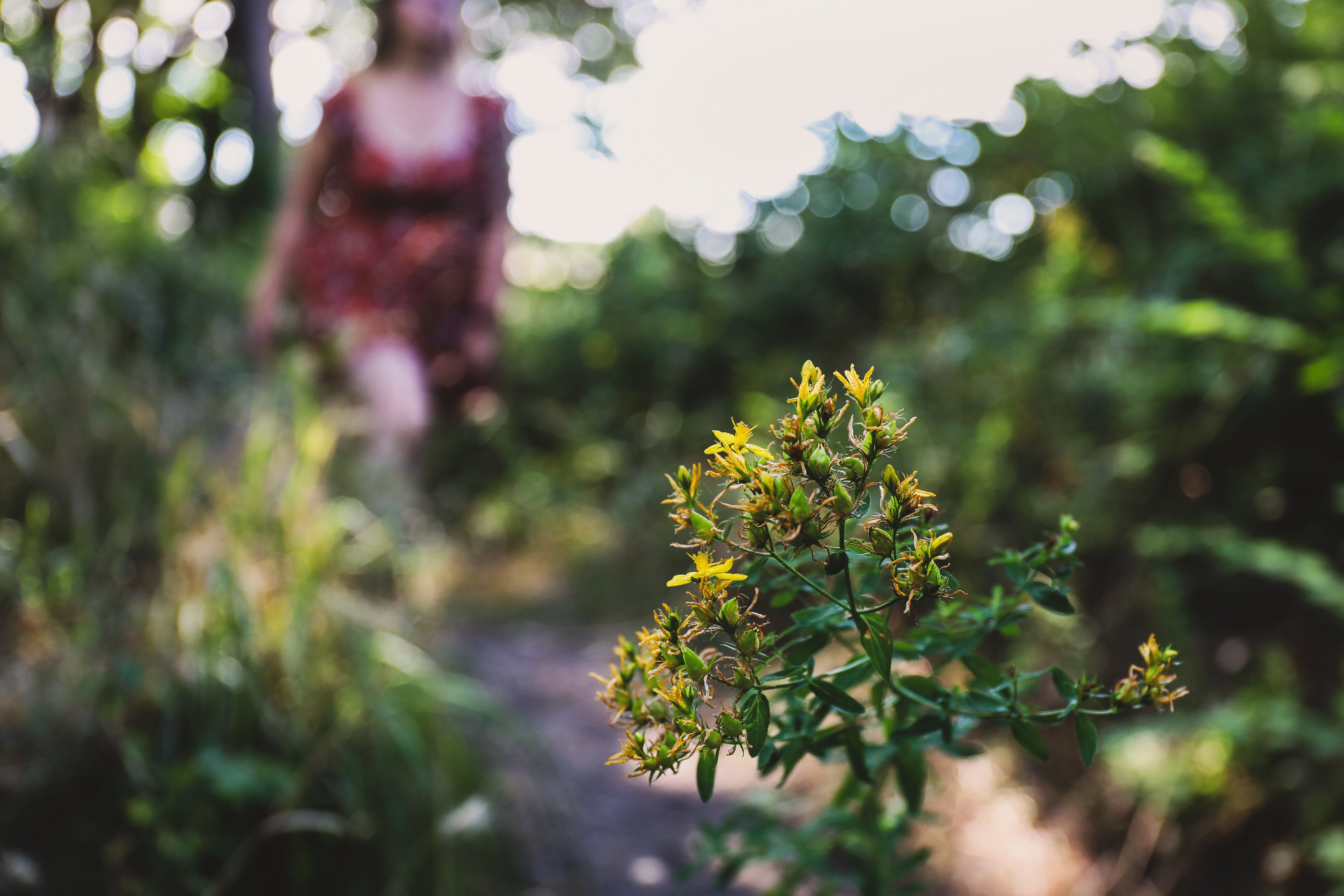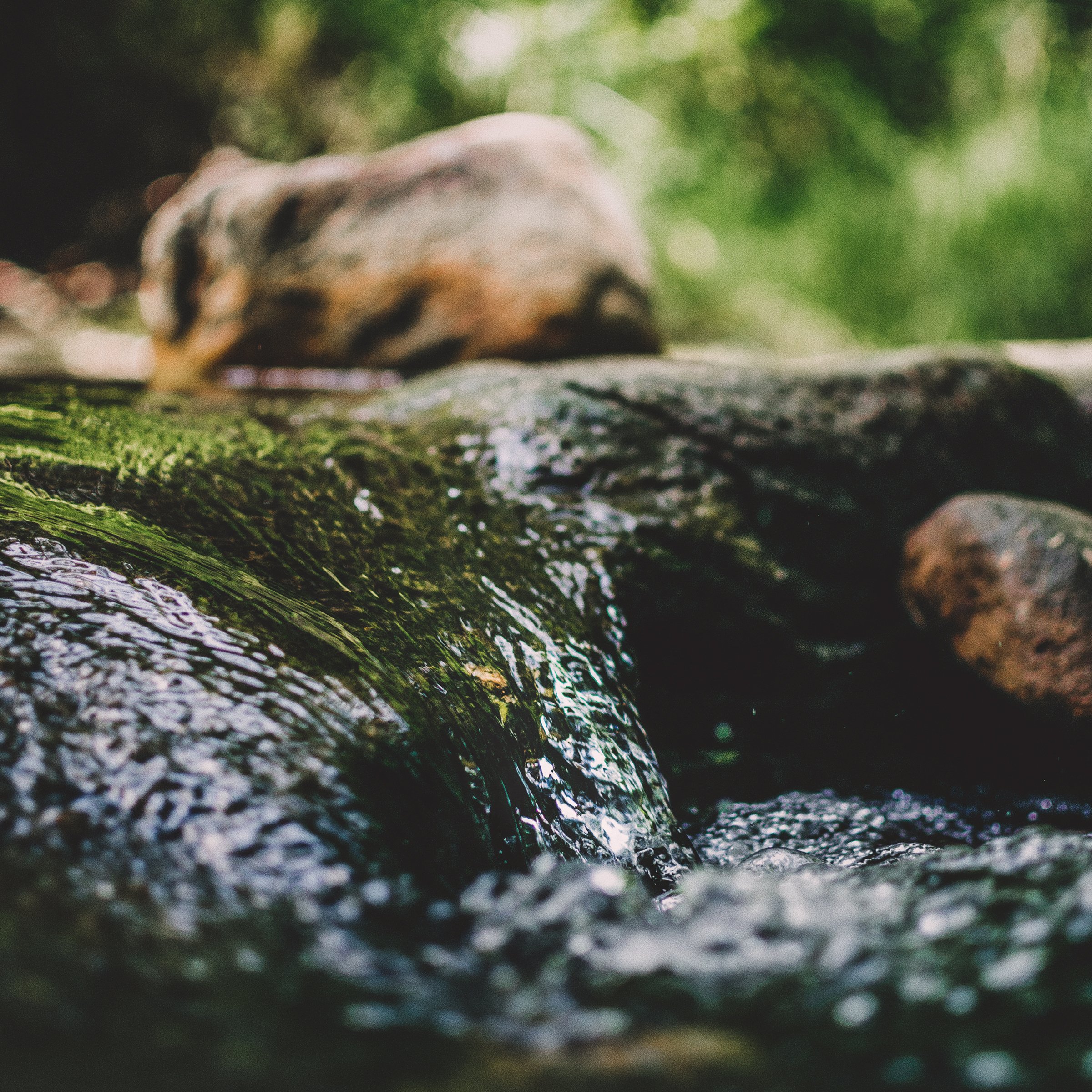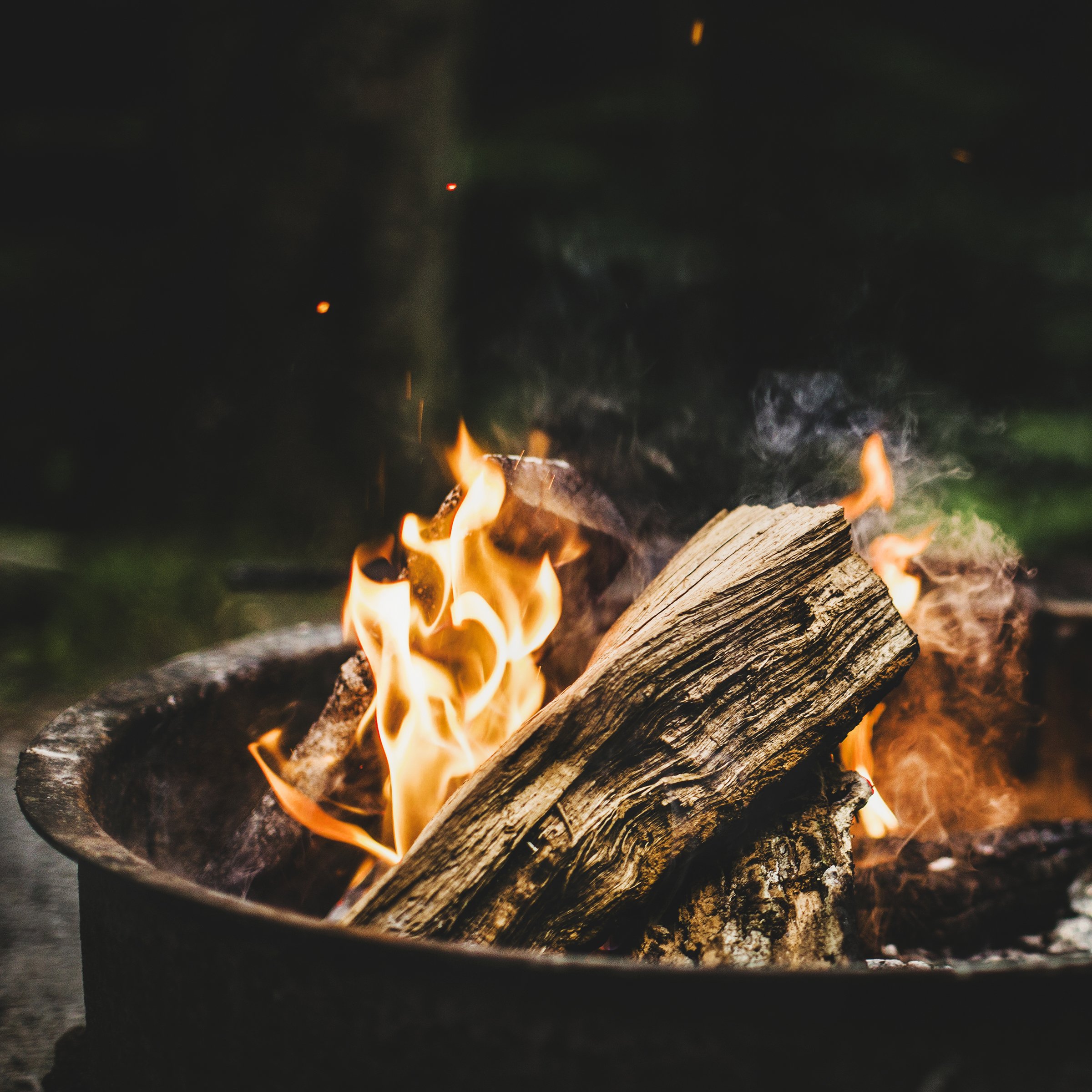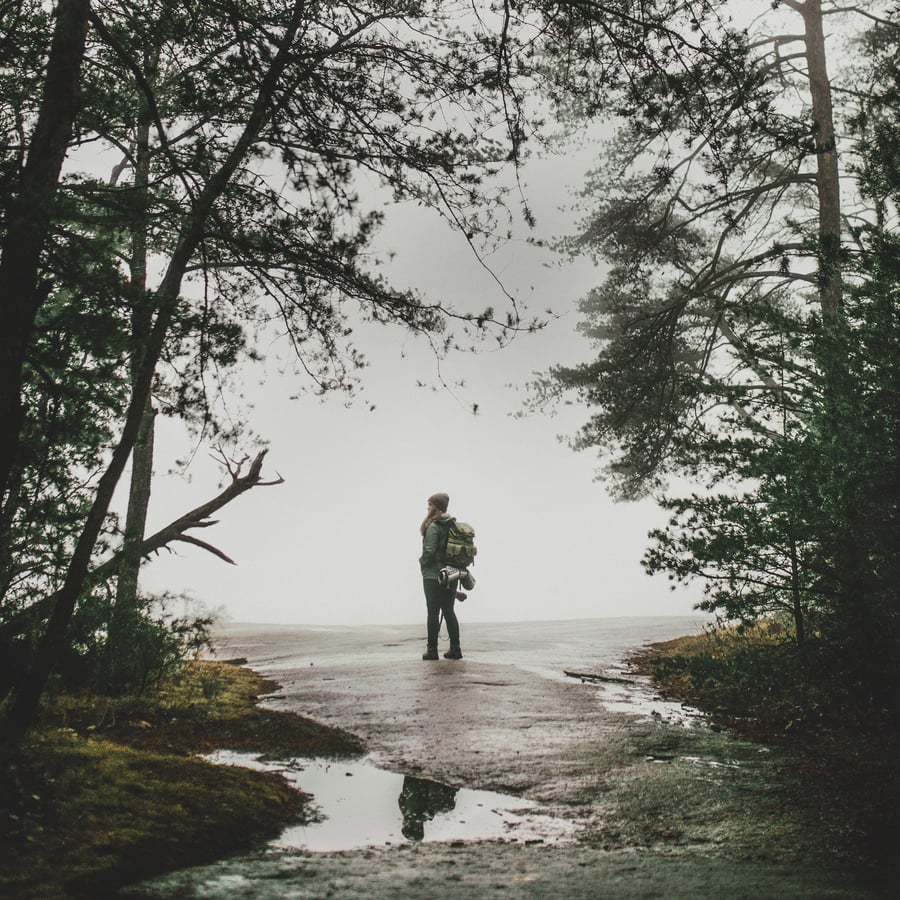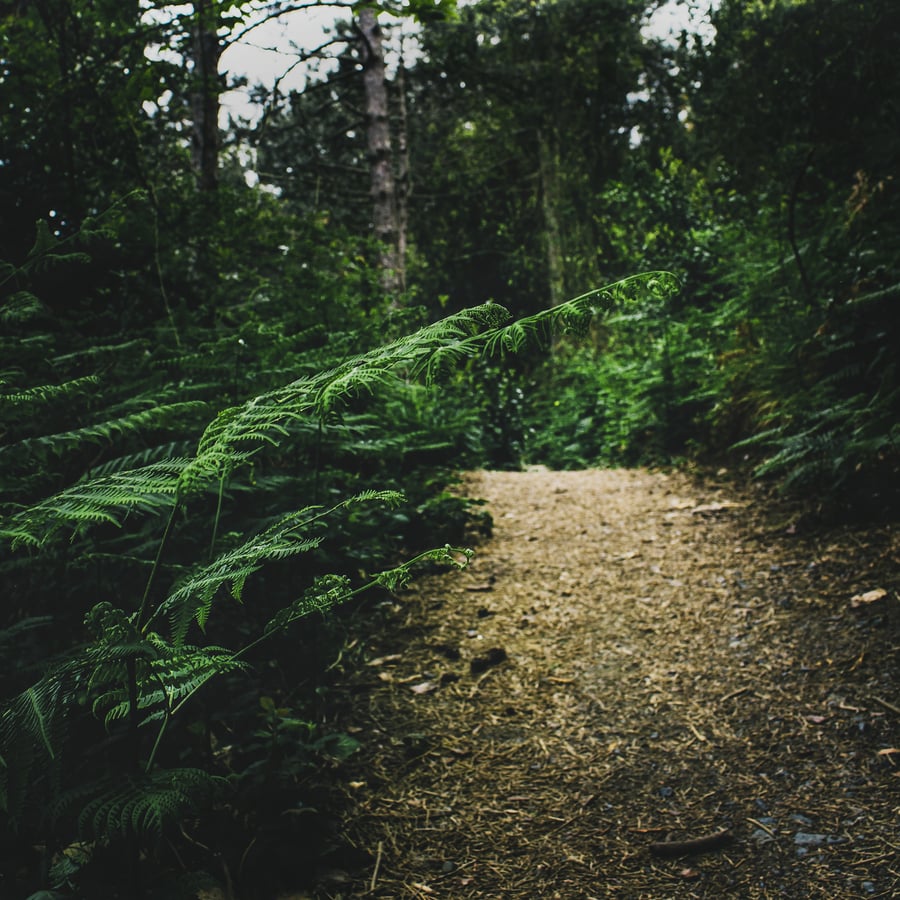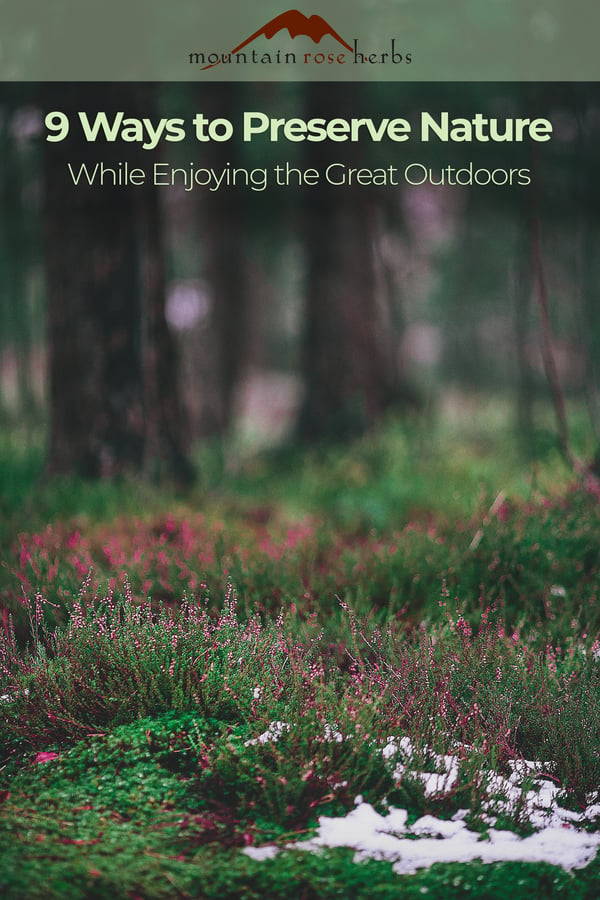We are in full swing of summer recreation season, so what better time to talk about how we can be sustainable and mindful when spending time in nature. Leaving no trace is a common principle that encompasses many actions (or inactions) to ensure that we leave the land around us in as good, if not better, condition than when we arrived.
I would be willing to bet that the first thing that comes to mind when you read “leave no trace” is that you should not leave litter in the forest. While this is a main pillar of this practice, preserving a wild landscape goes beyond this most basic of practices. Each step that we take and every river stone we turn has an impact. There are many ways that our paths affect the inhabitants of the places we love, and it is our job to protect them. When we are in nature, we are guests in the home of the plants, the trees, the animals, and even the insects. And we should treat it with the same respect we would if we were invited to someone’s home for a visit.
This list will help guide you on how to be better stewards of this incredible planet we call home.
9 Ways to Leave No Trace and Preserve Nature
1- Stay on Trail: While paving your own way might sound like a romantic idea, it is not ideal for our plant friends. This is especially true in delicate areas that are home to sensitive or at-risk plants, or where large numbers of people travel. Please opt to stay on the trail as much as possible and be particularly thoughtful if you see plants that are at risk.
2- Choose Camping Locations Mindfully: Rather than bushwhacking your way to a new campsite, stay where others have stayed before you. Camping in designated campgrounds or where there is evidence of a previous camp helps to minimize the unnecessary trampling of plants and habitats. This will also help you reserve more energy for other fun outdoor activities. It’s a win-win!
3- Be Smart With Fire: Be extra careful when using fire, especially in areas known for wildfires. Do not leave campfires unattended and keep them to a manageable size. It’s also important to pay attention to fire restrictions. Restrictions are not created to prevent you from having s’mores—they are intended to keep the land safe for all that live there and to preserve the forest so that it can be enjoyed for years to come. Also a note about firewood—use wood that comes from the land where you are building your fire. Transporting firewood can also import invasive insects and plants.
4- Watch for Invasive Species: Firewood isn’t the only way to spread invasive species. It’s important to become acquainted with the invasives in your area so you can be more mindful about not spreading them.
5- Forage Only When Necessary: Foraging is fun, but remember that as a human, you have the ability to source your food in your natural environment—wildlife does not. If you must forage for food or herbs, only harvest 5% of what you see of the plant. Remember that other lives depend on it. Howie Brounstein of the Columbines School of Botanical Studies also has a wild harvesting checklist that is very helpful.
6- Do Not Forage At-Risk or Endangered Plants: This one seems like a no-brainer, but foraging sensitive plants often comes from a lack of knowledge about what is at risk. It is a good idea to check each year to see what plants have been added to or taken off of the endangered or at-risk species lists. When looking for threatened and endangered plants, I recommend searching for them by state. The United States Fish and Wildlife website has a lot of great information, but lists plants all over the country, making it harder to filter through to the information that applies to you. United Plants Savers is another great resource to learn about at-risk plants and how you can help them.
7- Protect and Respect Water Sources: One of the largest attractions in nature is water sources. Lakes, ponds, rivers, and streams draw hundreds of thousands of people around the country to enjoy their beauty. Whether a day hike or a backpacking trip, it’s important to preserve these freshwater sources. You can do this by being extra careful when stowing your trash. Mistakes happen, so taking a little extra effort to keep trash contained can really help. Also, do not use soap directly in bodies of water or streams. If you need a shower or want to wash dishes, remove water from its source, and only use soap 200 feet or more away. I love the shower bags that you can fill up and hang in a tree, they make life much easier. Lastly, use natural mineral-based sunscreen and skip any lotions or bug sprays if you can help it. Residues from skincare products can affect aquatic dwellers.
8- Pack Out Everything: Whether day-hike energy bar packaging or several days’ worth of camping meal refuse, it is important to pack everything out. Non-biodegradable things are obvious, but even compostable goods should be packed out. If everyone on a hike discarded their banana peels, orange rinds, and avocado pits, we’d eventually be hiking through a compost pile. Allow wildlife to eat their natural and native foods by not tempting them with foods their bodies may not be used to. For instance, avocados are toxic to almost every animal except humans.
See a rogue granola bar wrapper or water bottle but it's not yours? Do a good deed and pick it up! It likely slipped from someone’s bag. It will happen to you one day without you knowing, so hopefully, the next person on the trail will do the same for you.
9- Properly Handle Human Waste: And last but not least, the topic no one wants to talk about—human waste. While not pleasant, it’s a reality that we need to destigmatize because silence leads to misinformation. The first step is to check the regulations for the park or area you will be recreating in. If there is high traffic or if it is in an area that is a sensitive habitat, you may be required to pack out even your own waste, as well as that of your dogs. If regulations permit you to dig a “cathole,” be sure that you are digging the full depth of at least six inches and be sure to locate the hole a minimum of 200 feet away from campsites and water. If you are required to carry out your own waste, there are special bags designated for this purpose.
Knowledge is power when it comes to protecting our natural environment. The better prepared and the more you know, the greater the impact you can make. You have the power to lead by example and teach others how to be stewards of the land.
May your trails be happy and long…
Interested in Other Sustainable Ways to Enjoy the Great Outdoors?
Check Out These Zero-Waste Camping and Backpacking Hacks
You may also be interested in:
- Trillium: At Age-Old Plant in Need of Our Help
- Osha: A Supportive, But At-Risk Plant
- A Forest Grown Future for Ginseng

